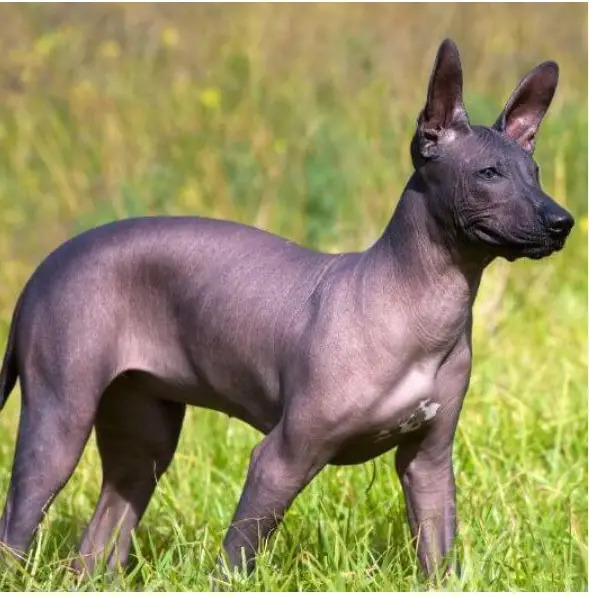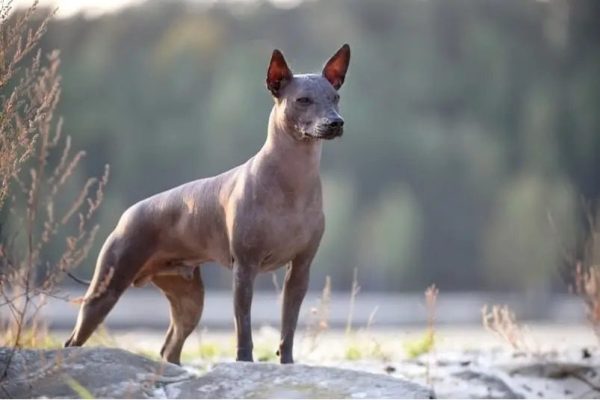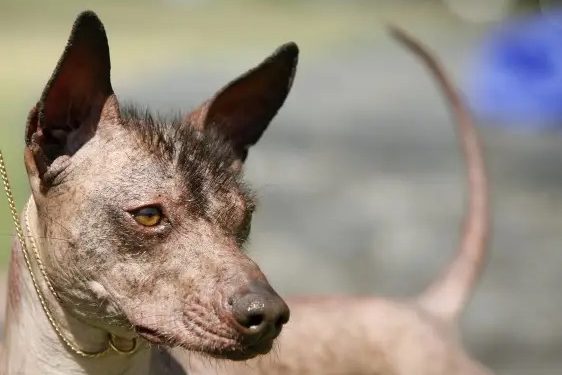If you’re looking for an unusual pet that requires minimal maintenance, a hairless dog may be the perfect companion for you.
These canines come in many shapes and sizes, but all have one thing in common – they don’t need to be groomed or bathed nearly as often as their furrier counterparts.
With their unique look and low-maintenance lifestyle, these dogs make excellent pets for busy families who still want the companionship of a four-legged friend.
But while they may appear easy to care for on the surface, there are still some important things to consider before committing to owning a hairless pup.
In this article we’ll explore what makes them so special and discuss how to best meet the needs of your new family member.
Types Hairless breed of Dog
With their unique looks and endearing personalities, hairless dogs have long been a source of curiosity for many. Whether it’s the Chinese Crested or the Mexican Hairless, these breeds provide an unusual companion to those looking for something different from your typical pet. But before you consider adding one to your family, there are some things to know when it comes to socializing challenges and activity levels that come with owning a hairless dog.
Here are the 10 most well known breeds of hairless dogs.
1. American Hairless Terrier
2. Chinese Crested
4. Peruvian Inca Orchid
5. Argentine Pila Dog
6. Abyssinian Sand Terrier
7. Hairless Khala
8. Jonangi
9. Ecuadorian Hairless Dog
10. Hairless Chihuahua
11. African Hairless dog
Hairless dogs require regular grooming — even if they don’t have fur! These breeds need more frequent baths than other types of pets since their skin can be prone to dryness and irritation; special lotions may also help protect them against sunburn and chapping. Additionally, owners will want to watch out for any lumps or bumps on their pup’s skin where bacteria can thrive in warm weather conditions. Because of this extra care needed, patience is key as you begin to bond with your new furry friend.
Activity levels vary among specific breeds, but most prefer moderate amounts of exercise each day such as walks around the block or trips to the park, with plenty of playtime included too! Those who live in warmer climates should take caution during hot summer months by not overexerting themselves outside – especially if they lack access to air conditioning indoors. It’s important to remember that hairless pups might need more breaks than other varieties due to their sensitive nature in higher temperatures.
No matter what type of breed you choose, early socialization is essential for all puppies so they become well-adjusted adults capable of living harmoniously alongside humans and other animals alike. Introducing them into different environments and allowing them time away from home helps build confidence while teaching good behaviors at the same time – whether they’re covered in fur or not!
Grooming & Bathing Requirements
Grooming and bathing a hairless dog is an important part of their overall care. These dogs have unique needs when it comes to grooming, as they lack the fur coat that other breeds rely on for temperature regulation and sun protection. Fortunately, you can easily keep your pup looking its best with some simple steps!
After washing, be sure to dry your pup thoroughly; this is especially true around the ears where moisture can cause irritation in hairless breeds.
To help protect them from harsh UV rays, make sure to apply sunscreen before taking your pup outdoors – even if it’s just for a short walk.
It’s also helpful to invest in clothing items like sweaters and jackets that will provide extra insulation against cold temperatures or inclement weather.
When it comes to caring for your special pooch, proper grooming habits are essential not only for maintaining good hygiene but also ensuring that they stay safe and comfortable year-round. With these tips in mind, you’ll have everything you need to give your pup the perfect pampering!
Health Considerations
The sun may be a blessing to many, but for hairless dogs it can prove to be an enemy. Not only do they lack the protective fur of their more hirsute canine counterparts, they are also particularly prone to skin irritations due to sunlight exposure. As such, owners should take extra care in ensuring that their precious pup is adequately protected from the harmful rays of the sun if spending any length of time outdoors.
One way that owners can help protect their pooch’s delicate skin is by limiting direct exposure during peak times, when UV radiation is at its strongest – usually between 10am and 4pm.
This doesn’t mean your dog needs to stay inside all day though; just keeping them in shaded areas or under some sort of cover will go a long way towards avoiding painful burns and other skin issues associated with prolonged sun exposure.
Clothing is another option you can explore which will provide further protection while still allowing your pet plenty of freedom of movement outside. There’s no shame in getting creative here either! With so much variety on offer these days, why not opt for something fun like a onesie or even one of those cute little hats?
In addition to clothing and shade, sunscreen specifically designed for animals can also be used as an effective form of defense against ultraviolet radiation (just make sure you buy one suitable for use on cats/dogs!). Applying this once every couple of hours while out and about could easily become part of your regular routine – providing both you and your four-legged friend with peace of mind knowing that you’re doing everything possible to keep them safe from the potentially damaging effects of the sun’s rays.
Exercise & Training Needs
Exercise & Training Needs
The hairless dog is a relatively active breed, so it needs plenty of daily exercise and mental stimulation. A good rule of thumb is to provide your pup with at least 30 minutes of physical activity per day, either in the form of leisurely walks or vigorous runs.
In addition to physical activity, this breed also enjoys engaging in interactive activities such as agility classes or retrieving games. Such activities help keep them mentally stimulated and can even prevent potential behavior problems from arising.
Another important aspect for these dogs is socialization. It’s essential that they learn how to interact appropriately with other animals, people, and environments–this helps build their confidence and trust in humanity. Taking them on regular outings to parks, pet stores, doggy daycare centers, etc., allows them to become more comfortable around different sights/sounds/smells while reinforcing positive behaviors through rewards-based training methods.
Here are some tips when caring for a hairless dog:
- Provide adequate amounts of exercise each day
- Take the time to engage in interactive activities
- Make sure you expose them regularly to social situations
Keeping up with their exercise and training needs will ensure that your furry friend remains happy and healthy!
Finding The Right Hairless Dog For You
Exercising and training your hairless dog is an important part of being a responsible pet owner. Now that you know the needs of this unique breed, it’s time to find the right one for you! It’s like taking a stroll through puppy paradise – with so many breeds to choose from, picking one can be overwhelming. But don’t worry; by following these steps, you’ll have a furry friend in no time.
When choosing a breed, consider what kind of lifestyle you lead. Do you prefer more active or less active dogs? Hairless dogs come in all sizes and personalities, so make sure to pick one whose needs match yours. For example, if your home is small but has plenty of outdoor space, then a larger hairless dog might do well there as long as they get enough exercise outdoors.
| Activity Level | Breeds |
|---|---|
| Low Energy | Chinese Crested Dog Mexican Hairless Dog American Hairless Terrier |
| Medium Energy | Xoloitzcuintli Peruvian Inca Orchid Argentine Pila Dog |
| High Energy | Pharaoh Hound Ibizan Hound Sloughi |
Once you’ve decided on the breed, it’s time to find the right breeder. The best way to ensure quality is to work with reputable breeders who are knowledgeable about the specific health concerns and care requirements associated with each particular breed. Ask friends or family members who own hairless dogs for recommendations and look up reviews online before making any decisions. Additionally, visit their facilities (if possible) to see how their animals are kept and treated – this will give you peace of mind when adopting your pup!
Now that you’re armed with knowledge about different breeds and where to find them, it’s time to start searching for your perfect companion! With patience and research, you’ll soon welcome a new member into your family – just remember that not all pups are cut out for every lifestyle. Take your time when deciding which one is best suited for you and yours.
Frequently Asked Questions
How Much Does A Hairless Dog Cost?
Owning a pet can be expensive, and one of the main costs is purchasing the animal itself. When it comes to dogs, certain breeds are more costly than others.
Hairless dogs in particular can come with a hefty price tag due to their specific grooming requirements and health concerns. Therefore, if you’re considering getting a hairless dog as a pet, it’s important to take into account how much they cost before making the commitment.
What Is The Average Lifespan Of A Hairless Dog?
When it comes to caring for a pet, understanding its average lifespan is an important part of the equation. Generally speaking, dogs with shorter lifespans can require more intensive care during their lives than those that live longer.
Hairless dogs are no different – they have specific exercise needs and grooming requirements that must be met in order to ensure they get the most out of life.
On average, a hairless dog will live between 10 and 14 years if given proper care. However, this varies depending on breed and size, so consulting with your veterinarian is essential when considering adding one of these unique pups to your home.
Are Hairless Dogs Good Pets For Children?
A hairless dog may seem like an unusual pet for children, but they make excellent companions.
Not only do they require minimal grooming needs, but their exercise requirements are also relatively low compared to other breeds.
Plus, while they might not be as fluffy and cuddly as some of their furrier counterparts, the unique look of a hairless pup can be just as adorable!
As long as you’re willing to help your child care for it properly, then there’s no doubt that a hairless dog could make a great pet for them.
Are Hairless Dogs Hypoallergenic?
Bathing and grooming requirements are important considerations when choosing a new pet.
Many people ask if hairless dogs are hypoallergenic, as they could be an ideal choice for allergy sufferers.
The answer is yes – these breeds usually don’t shed fur or dander, which can trigger allergies in some people.
However, it’s important to note that even though they may not cause allergic reactions, their bathing needs should still be taken into consideration since their skin requires more frequent cleansing than other breeds.
Fortunately, with the right care routine, owning a hairless dog can help alleviate symptoms of pet allergies while providing lots of love and companionship!
Do Hairless Dogs Shed Any Hair?
Bathing and grooming needs vary greatly depending on the type of dog you have.
Hairless dogs like Chinese Crested, Peruvian Inca Orchid, and American Hairless Terrier are becoming increasingly popular for those seeking a hypoallergenic pet.
But do hairless dogs shed any hair? The short answer is that many of these breeds don’t shed their fur at all!
However, they still require regular brushing to keep skin healthy and prevent tangles from forming in longer hairs.
So while your bathing and grooming needs may be less than other breeds, it’s important to stay up-to-date with proper care techniques to ensure your pup looks and feels its best!
SEE ALSO:
Beagle Corgi Mix: The Best of Both Worlds
Discover the Best Breed Small Dogs for Your Lifestyle
Conclusion
Hairless dogs can be a unique and interesting pet to bring into your home, but they do come with their own set of considerations.
While hairless dog breeds are not typically expensive, they have an average lifespan that is shorter than other types of dogs. Furthermore, due to their delicate skin and the potential for allergies in some people, these animals may not always be appropriate pets for children or those who suffer from allergies.
On the plus side though, due to the lack of fur, hairless dogs rarely shed any fur at all!
So if you’re looking for a low-maintenance pet that’s sure to turn heads wherever it goes, why not consider a hairless breed? After all, what could be more fun than taking care of a canine companion whose coat changes color with temperature?! And isn’t that something worth considering when it comes to picking out your perfect pup?



